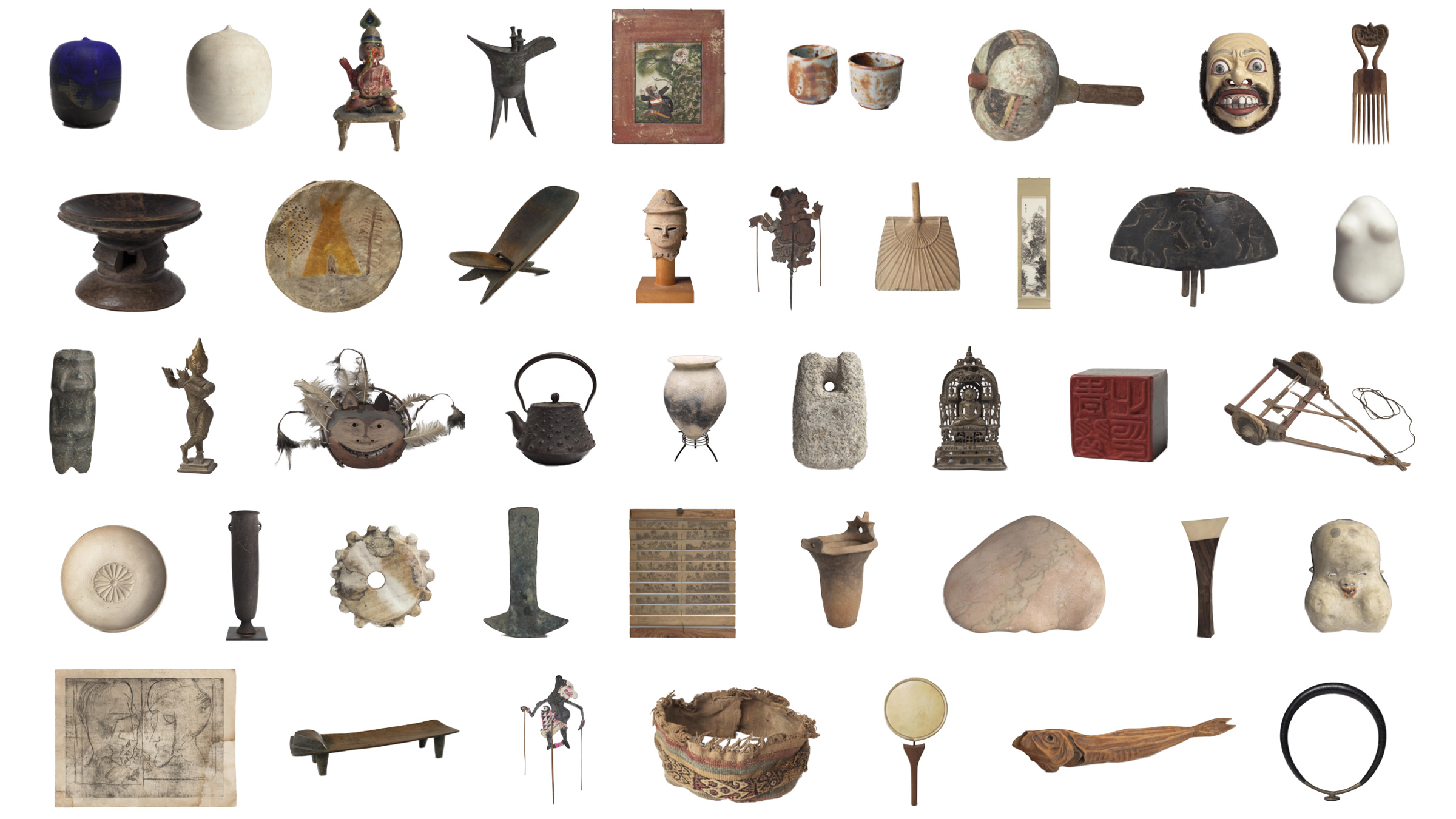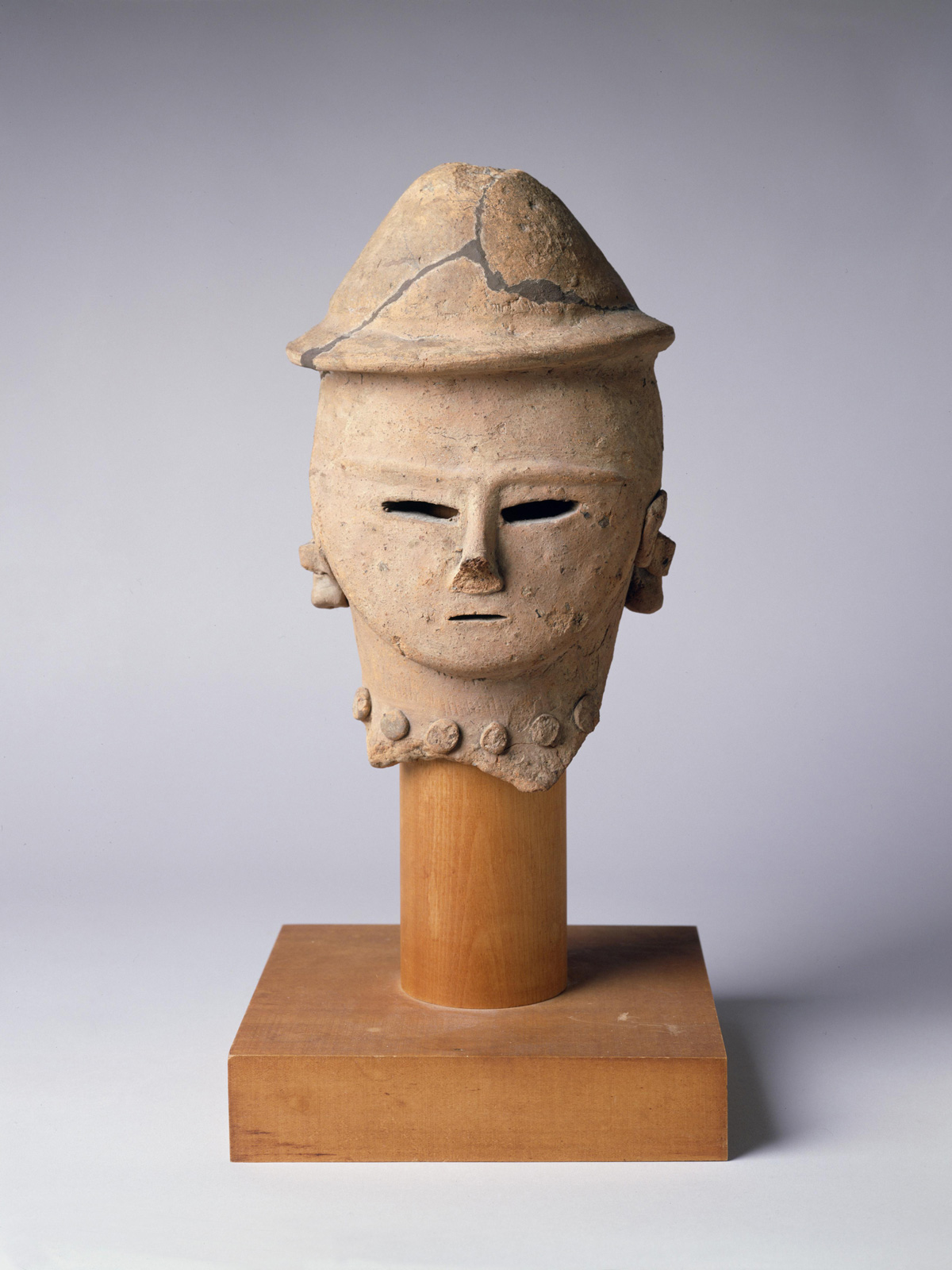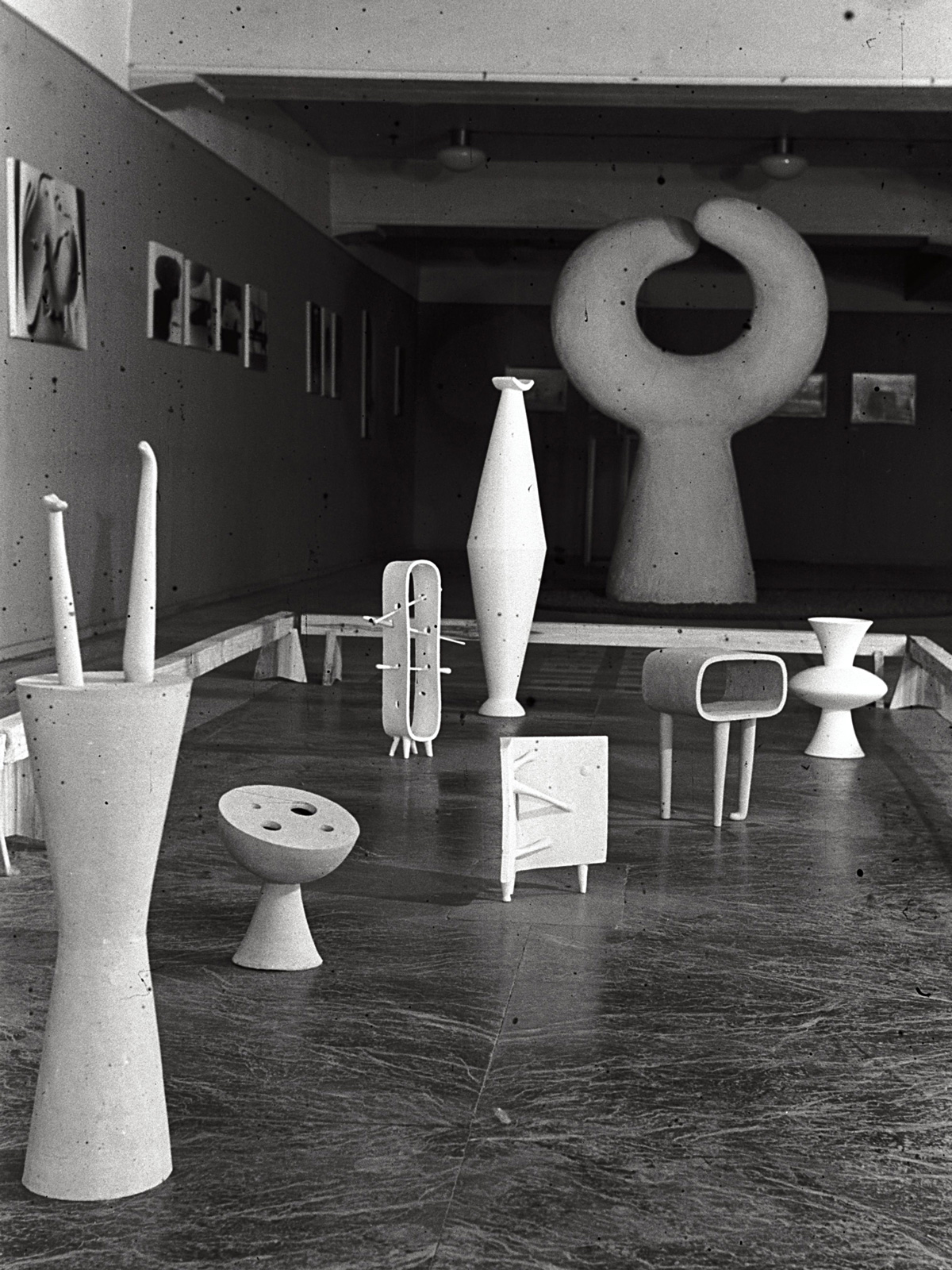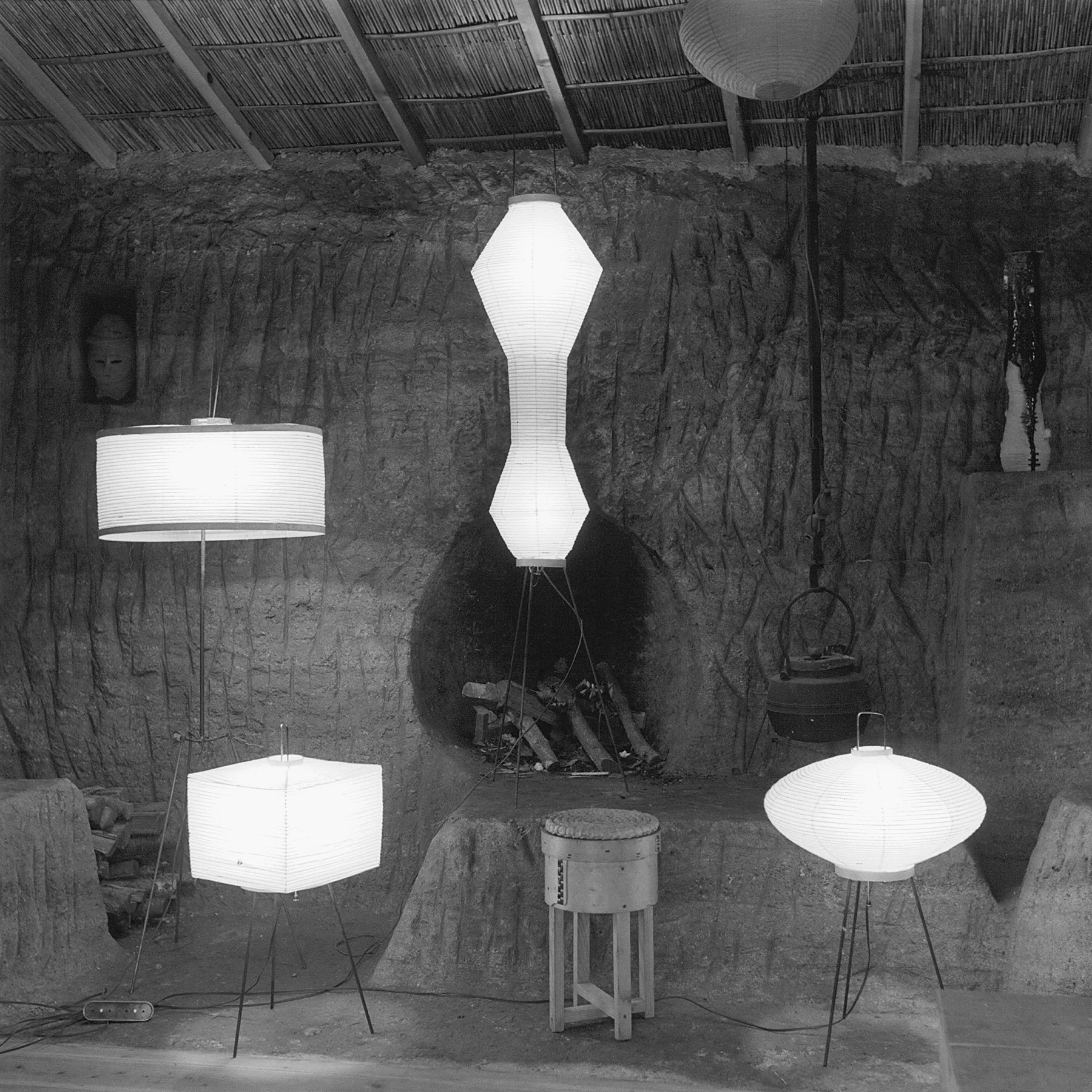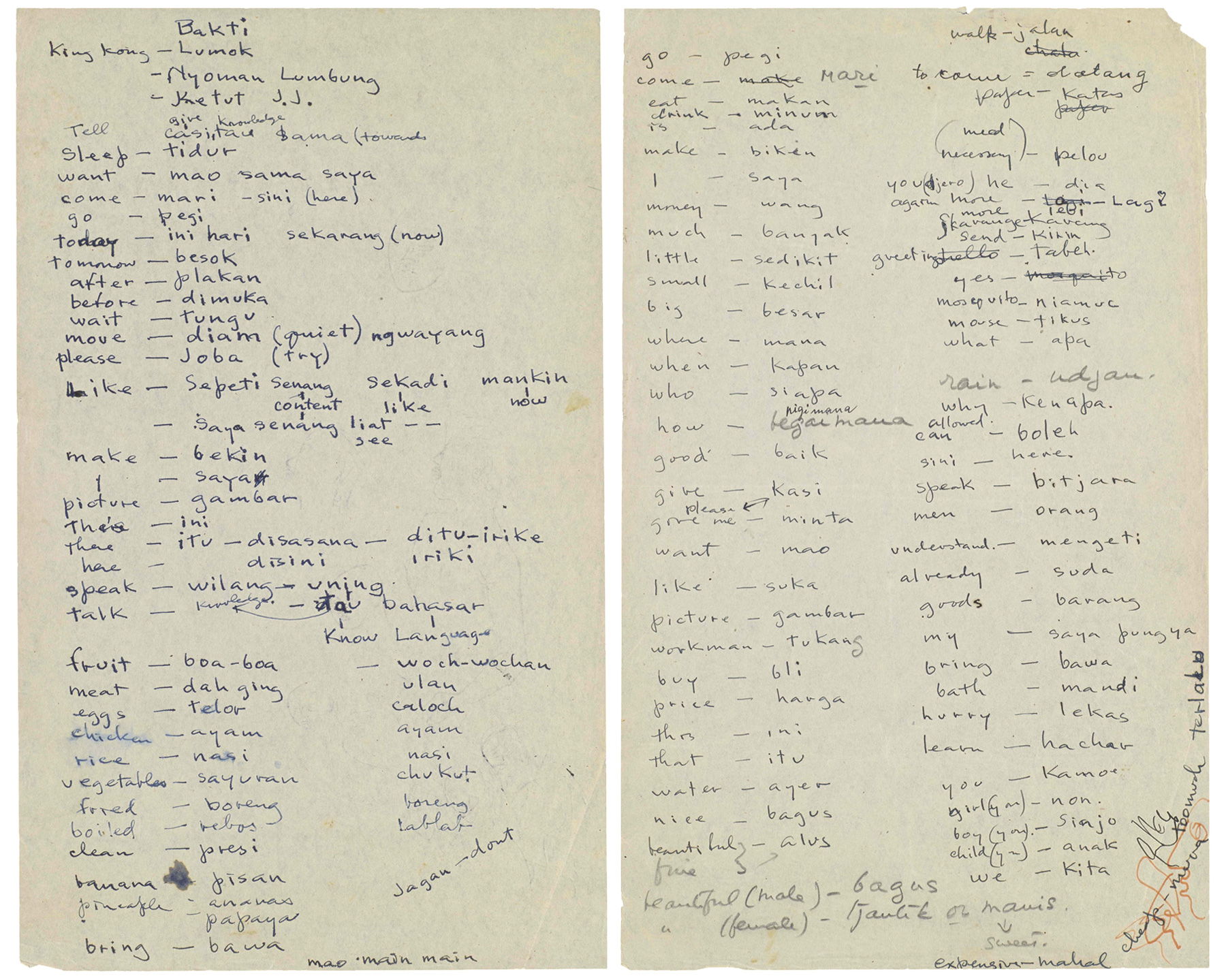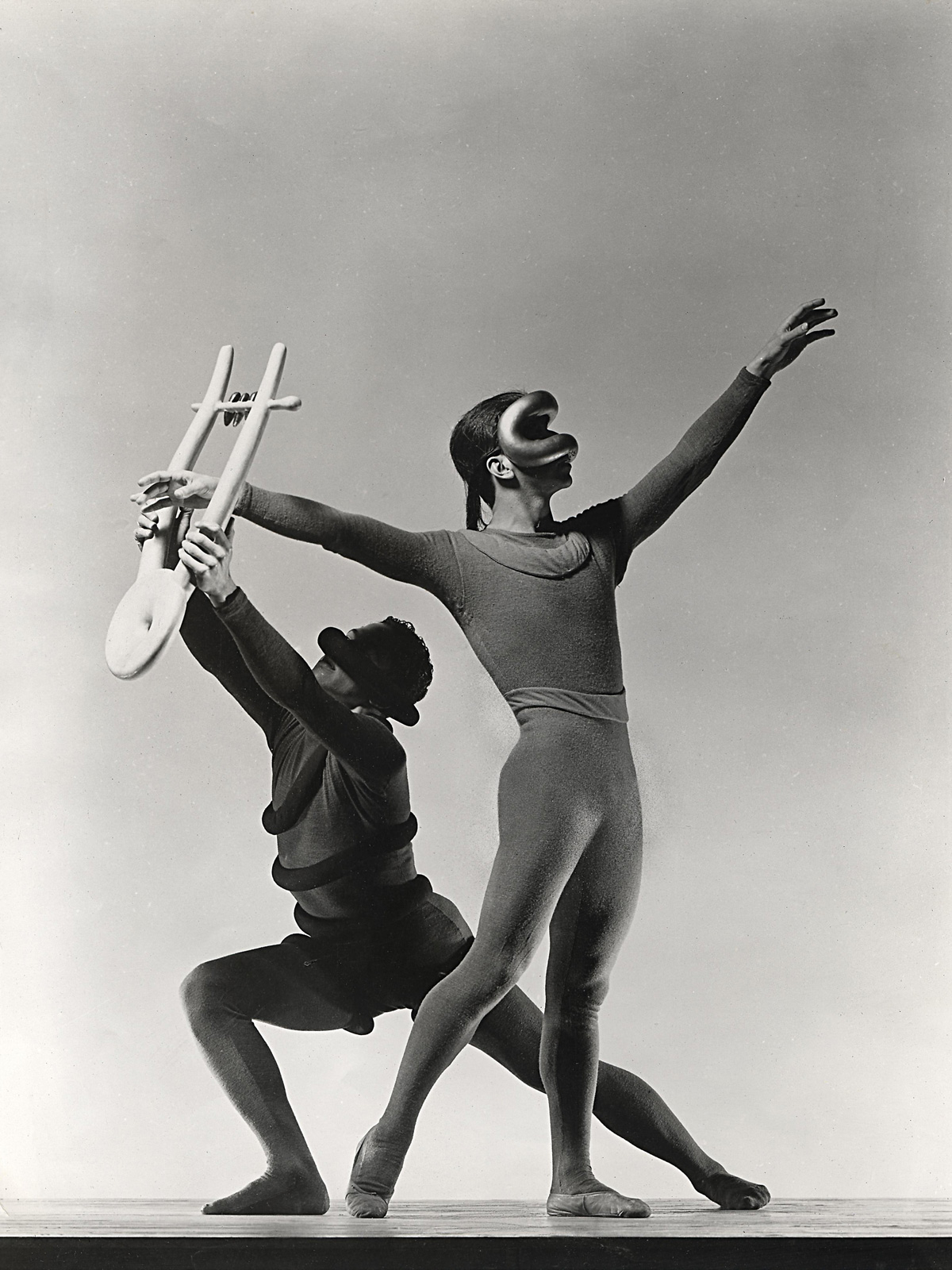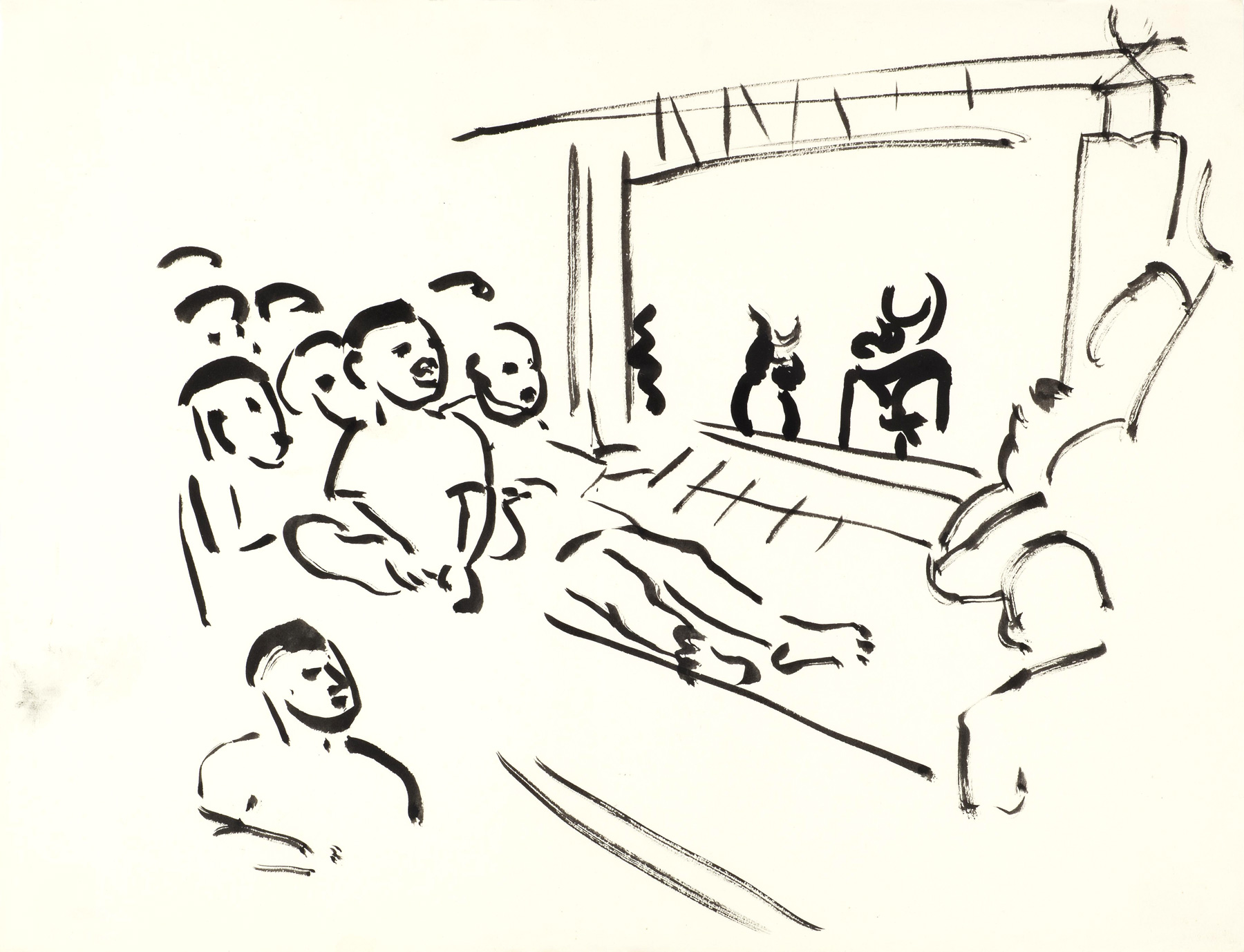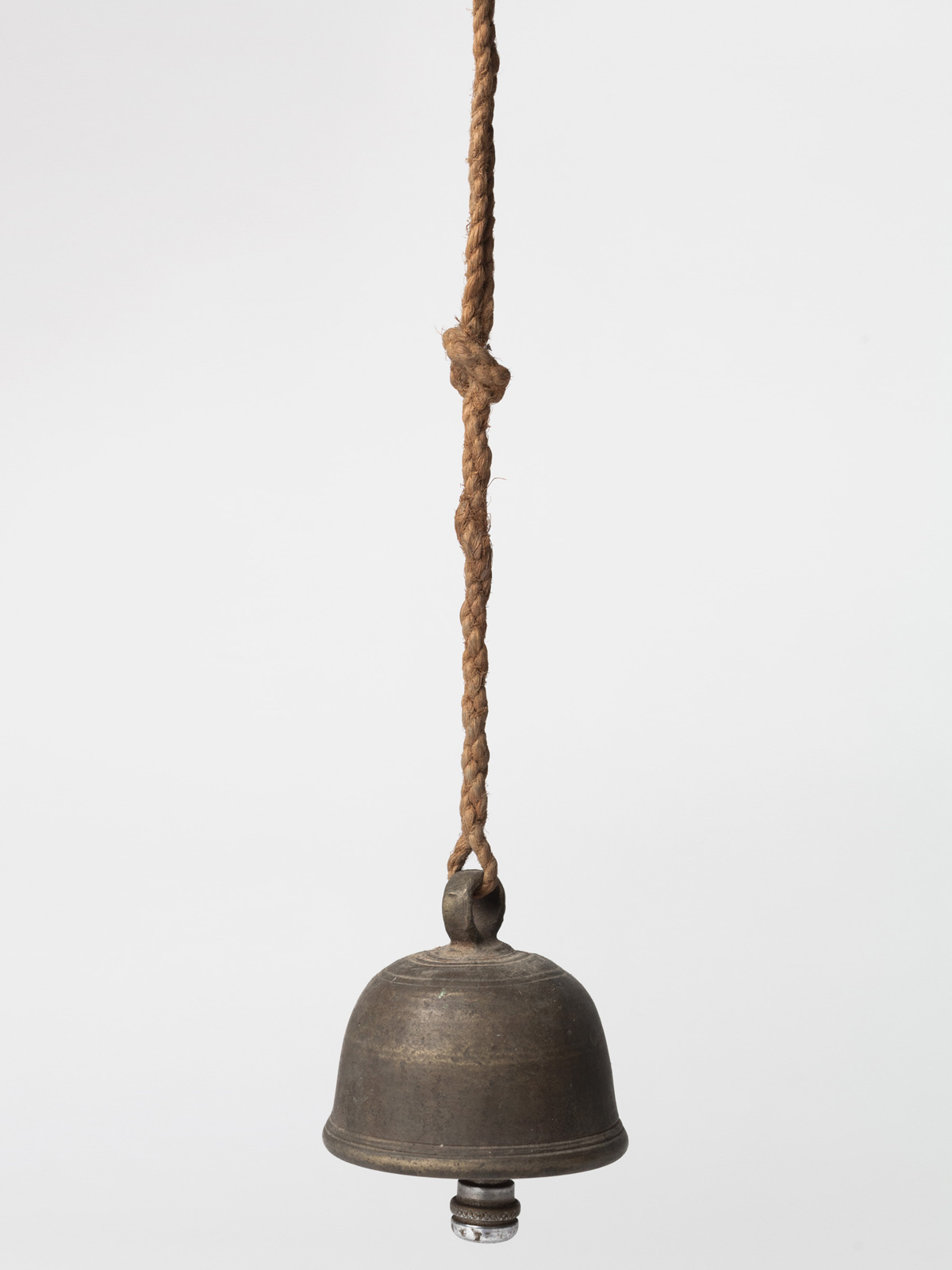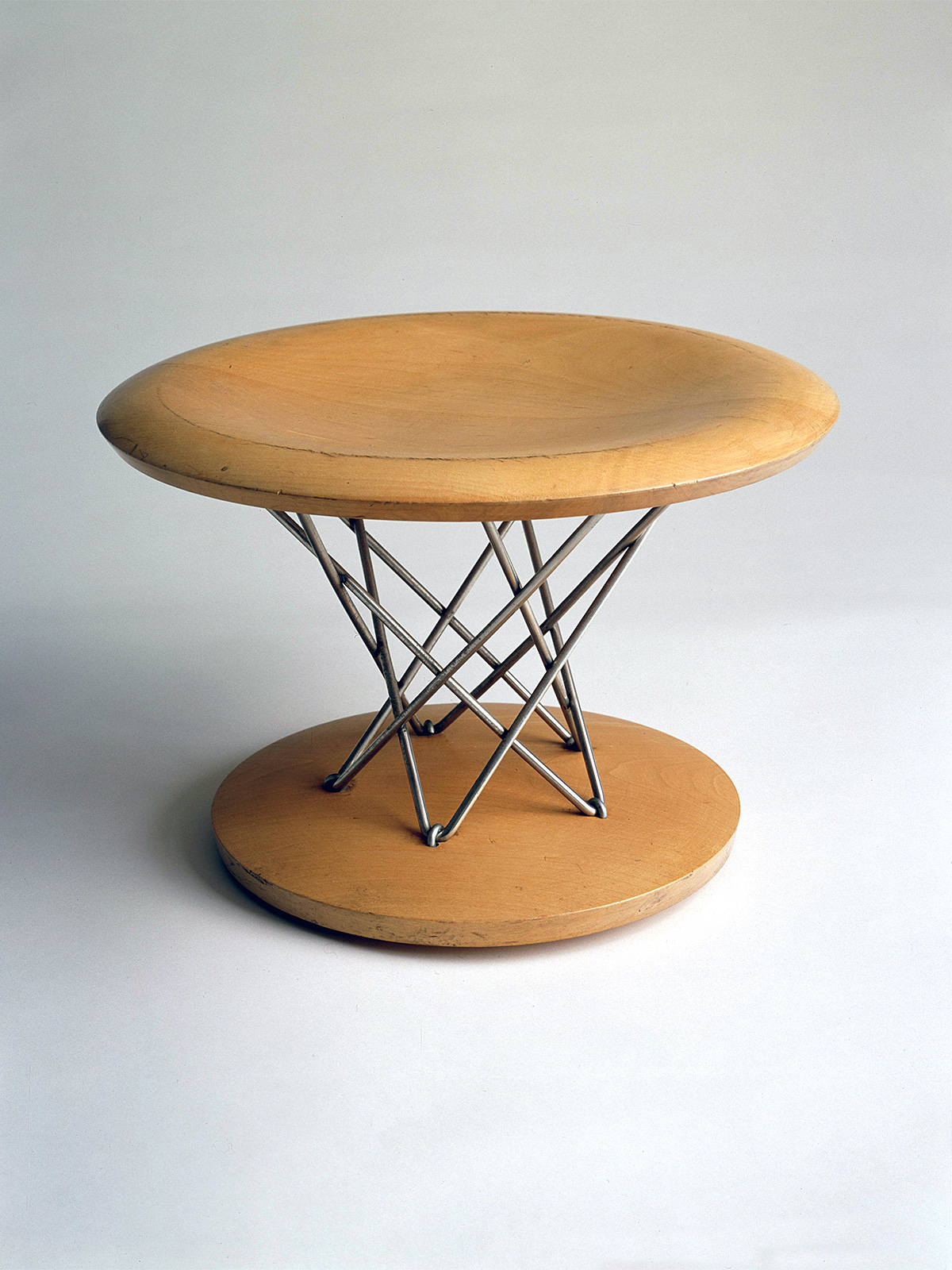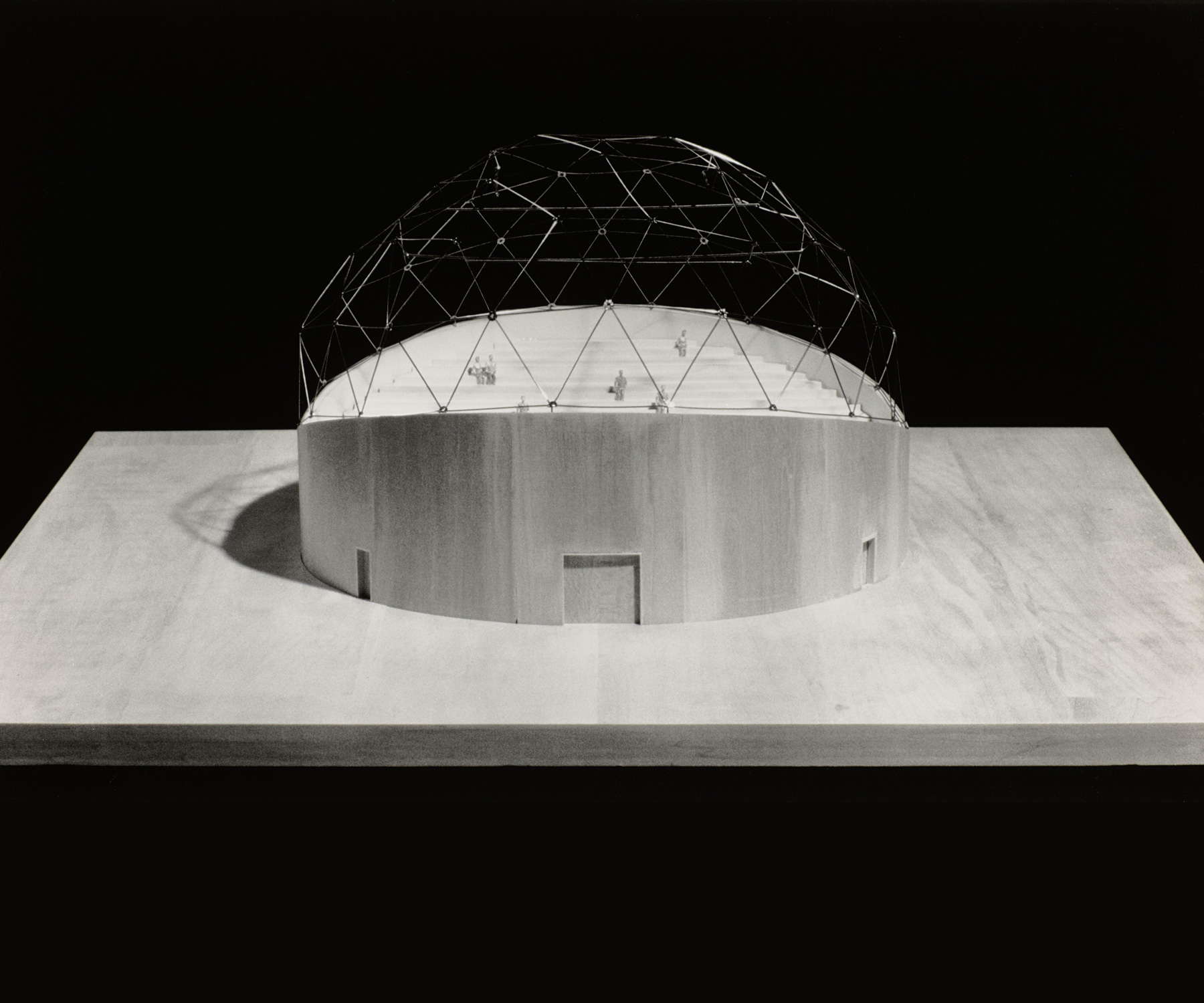By Kate Wiener
A 1960s photograph of Isamu Noguchi in the kitchen of his Long Island City studio and home shows the artist casually leaning back in his chair as he chats on the phone. On a pegboard and shelf behind him is a curious collection of objects: an ancient Chinese three-legged vessel sits below a four-sided Mexican bell, which is tacked to the wall along with two of Noguchi’s own small metal works, a Native American hide drum, and what appears to be a Japanese paper kite.1 A photograph of the space, likely taken a few years later, captures the pegboard adorned with a revised cast of objects. Among other new additions, the collection now includes a Balinese shadow puppet and a Melanesian shield, as well as a pair of Indian bhaya and tabla drums sitting atop Noguchi’s Cyclone Table.
These photographs of Noguchi’s pegboard and living space, which played host to a rotating selection of items over the years, offer a captivating glimpse into the extraordinary range of objects that Noguchi chose to keep in his orbit. More than four hundred of these objects, now loosely known as Noguchi’s collectibles, are housed in The Isamu Noguchi Foundation and Garden Museum’s Study Collection. Taken together, they offer a unique and intimate portrait of the artist, tracing his travels around the world and the phenomenal scope of his interests. This essay highlights select objects in this collection, treating them as entry points into Noguchi’s complex and multifaceted practice.
